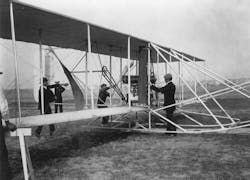I recently attended an industry event and heard Gary Silberg talk about his now famous work with KPMG on the “Clockspeed Dilemma”. For those of you not familiar with this work, I should explain; in its simplest terms, it is Albert Einstein’s theory of relativity - time is relative. For companies, this may be the view that “things take time”, but to the market the view is “I need it now, and if you don’t have it, your competitor will”.
We see it today everywhere, every day in the things we touch and use (and take for granted). Innovation is everywhere; from Kickstarter electronic doggie doors to the Boston Dynamics’ “DogBots” (I guess these could be used together…). Clockspeed today is faster than at any other time in history – and it is accelerating. To quote KPMG: “Across industries, new entrants and new business models are disrupting traditional business systems. A plethora of ripe technologies and innovations is readily at hand for both incumbents and fast-moving new entrants to assemble into high-value products, services, and businesses. We believe the next decade will produce as much change as the previous century did.”
A dream of man
A great illustration of clockspeed acceleration is found in the invention of manned flight – a dream of man from ancient times. Leonardo da Vinci imagined aircraft and (apparently unsuccessfully) built his ‘ornithopter’ in 1496; the first successful balloon flight was by the Montgolfier brothers in France in 1783; and England’s George Cayley built model gliders around 1850 - but it would take another 50 years before the first flight of a powered, heavier-than-air craft would take to the sky.
These early aircraft were mere ‘proofs of concept’ - but with enormous implications. World governments took notice and readily sought aircraft for military purposes. Initially thought to be only useful for observation, their value was quickly seen as much more after their use by the French (only seven years after the famous “Kitty Hawk” flights) in their effort to conquer Libya. By the outbreak of World War 1, France, Russia and Germany each had over 200 airplanes available for use. In the ‘Great War’ clockspeed took off – literally. Innovation in aircraft accelerated so quickly that often, when new aircraft were delivered to the fight, they were already obsolete. It has been said that a key factor in Germany’s loss was its stubborn use of the once-superior, but then out-dated ‘Albatros’ against the hastily-developed British SE-5A and French SPAD-13 fighters. Clockspeed did them in.
And clockspeed continued accelerating. In the next 50 years, we had supersonic jet aircraft. Consider that Orville Wright lived long enough to see the launch of the iconic B-52 bomber: what must he have thought about clockspeed?
The same dilemma
Today, we face the same “Clockspeed Dilemma” in our business. This was noted recently by Dr. Paul Rogers, Director of the Tank Automotive Research, Development and Engineering Center (TARDEC) in a speech to the Ground Vehicle Systems Engineering & Technology Symposium (GVSETS) in August. Dr. Rogers commented that our adversaries are adopting emerging technologies at a rate that is unprecedented. This so stresses military development cycles (as KPMG states “…disrupting traditional business systems”) that our military must adopt solutions from industry that have compelling, disruptive warfighter value propositions.
But speed involves risk; just as those early flyers risked everything to take to the air, to travel faster, fly higher, carry more weight and fight in the air, both industry and government must accept that perfection is not the goal. The goal is the best possible in the shortest time.
The fight today is multi-dimensional; land, air, sea, space, and virtual (as in cyber) domains. Innovation in this last domain runs at clockspeeds of months or even weeks. This is the challenge for companies such as ours; innovate, disrupt, deploy, assess, repeat. This is why we spend so much time in understanding how our platforms and technologies can help enable AI, machine learning, advanced image processing and analytics, autonomy and cyber protection – because it’s there that the real opportunity exists for the kind of disruptive, winning innovation that can deliver true competitive advantage to our warfighters.
Tick-tock.
About the Author

